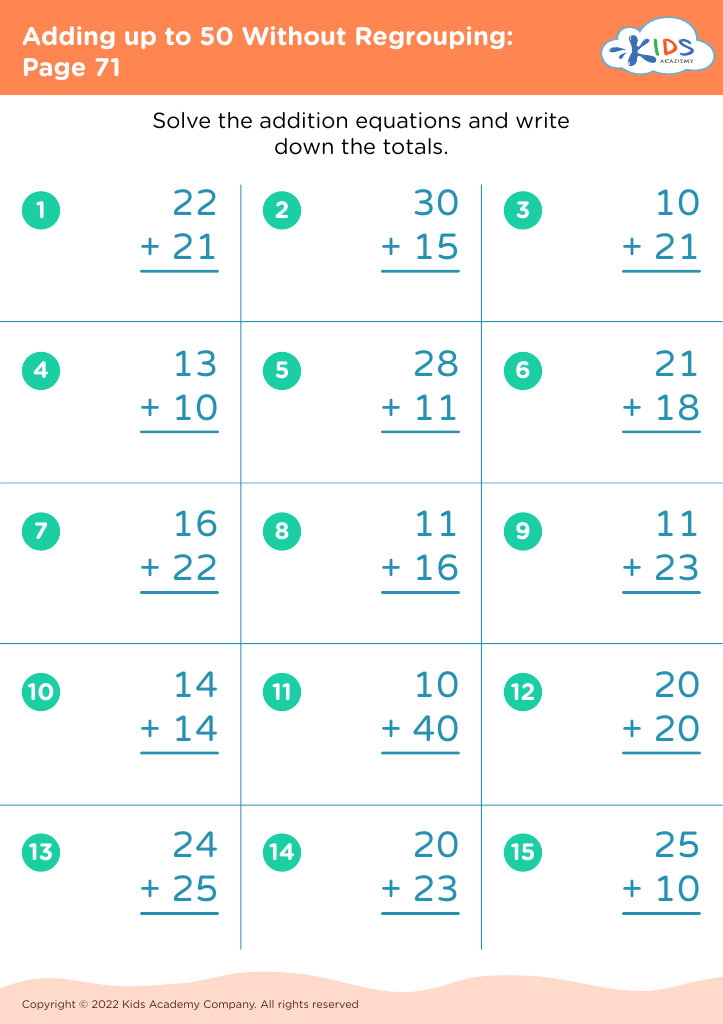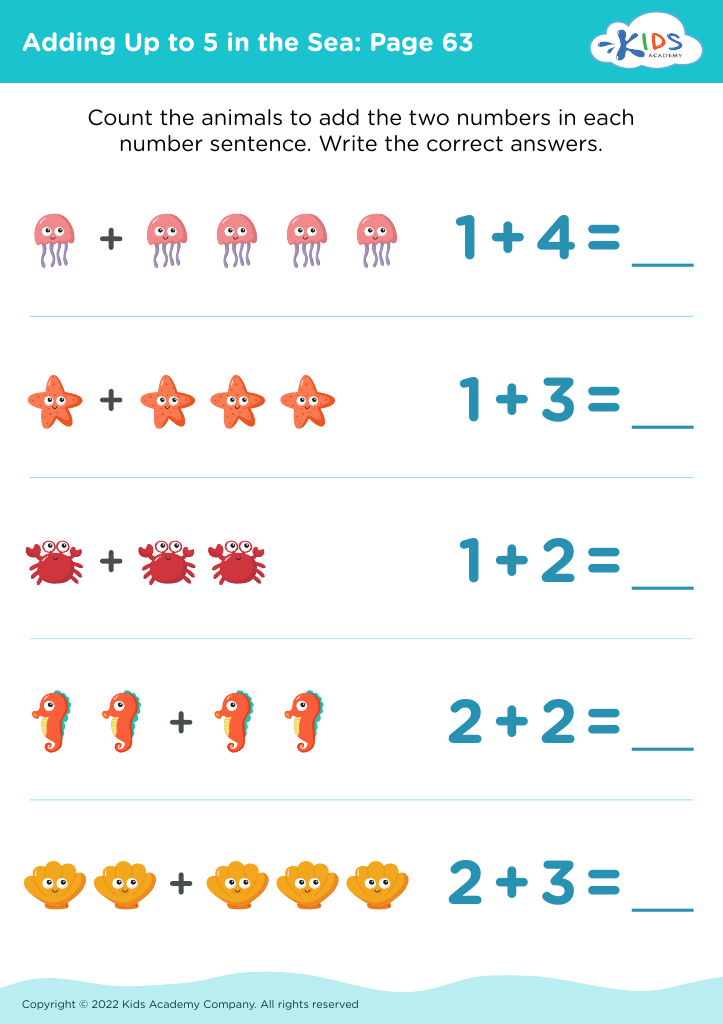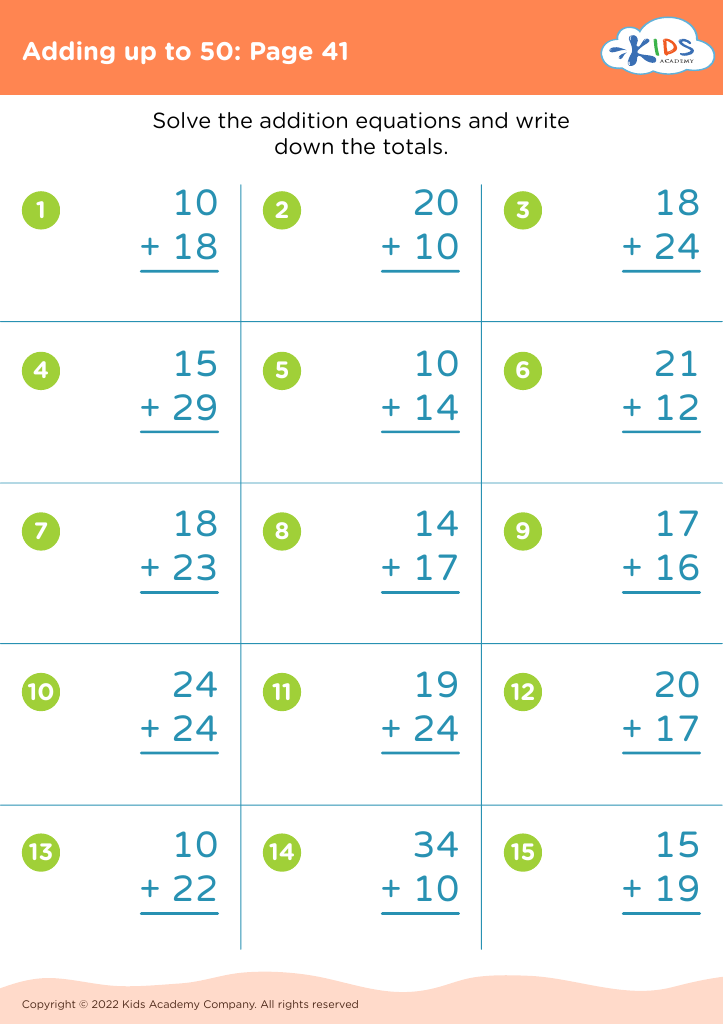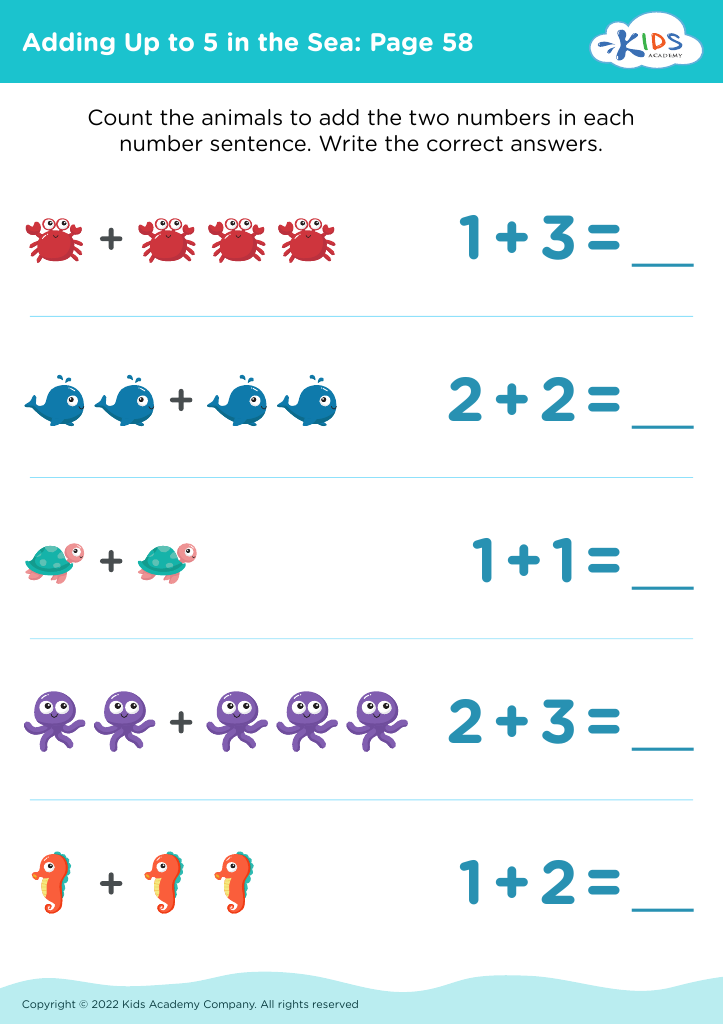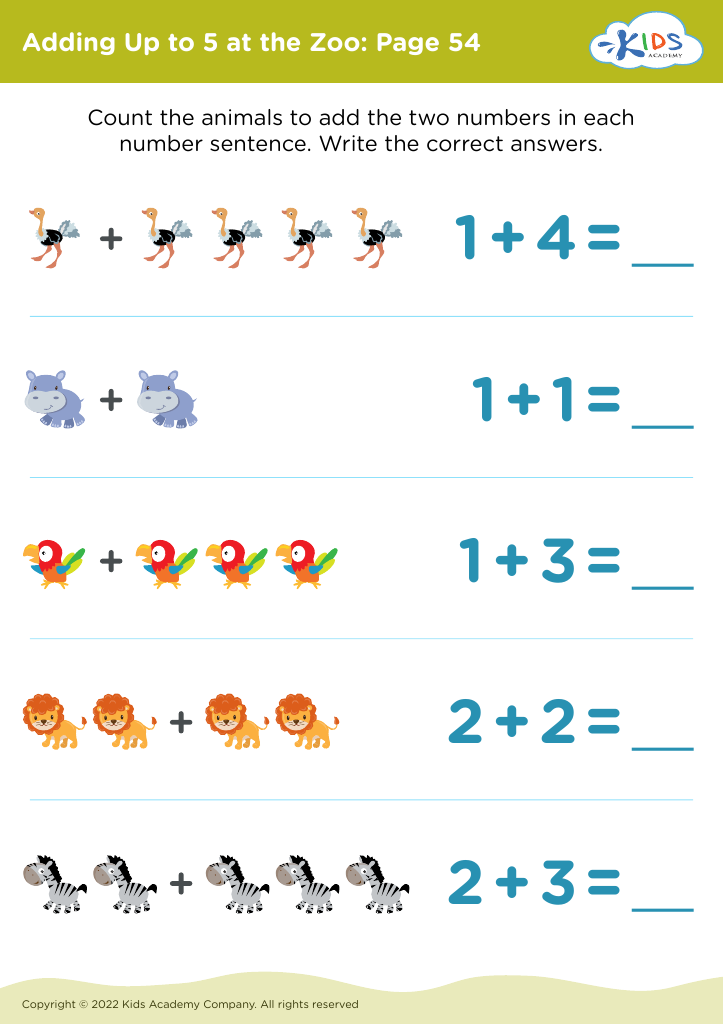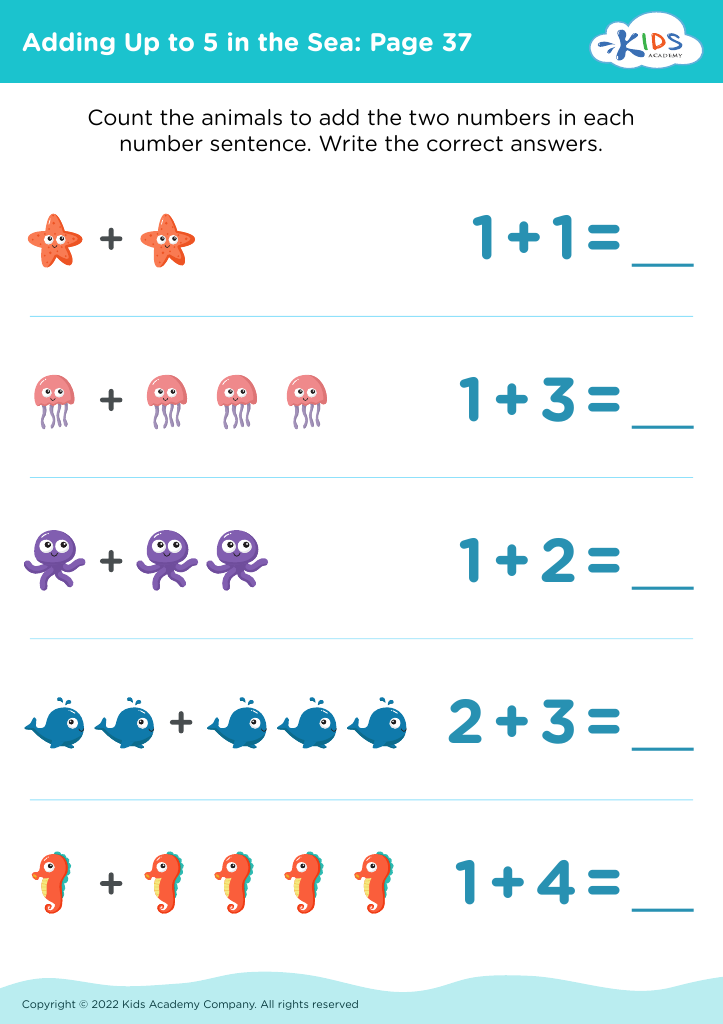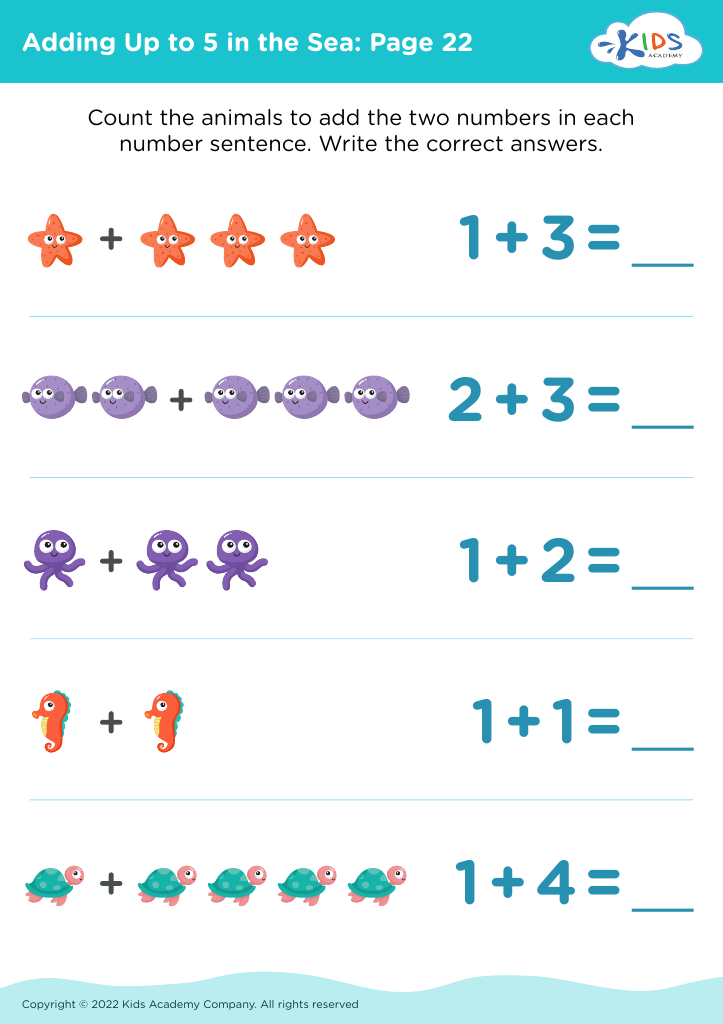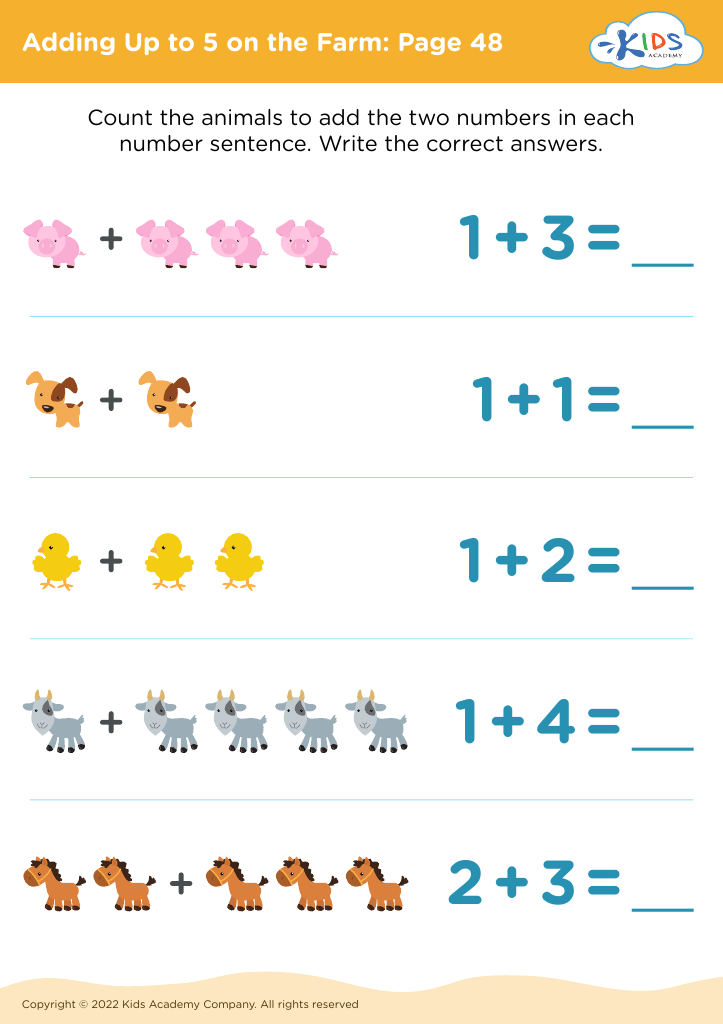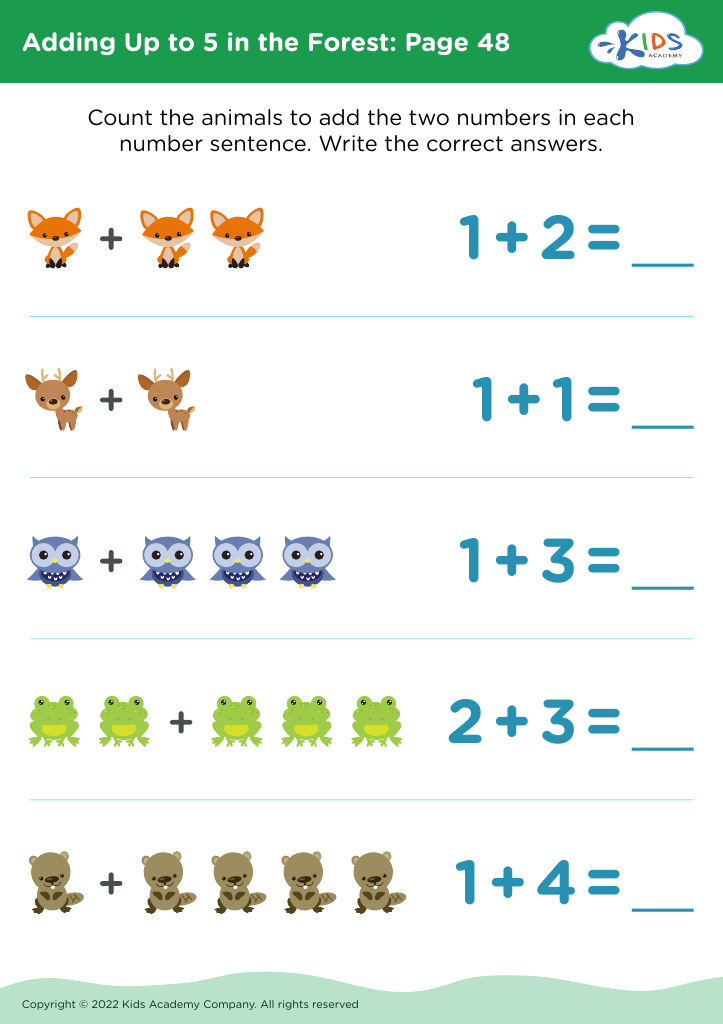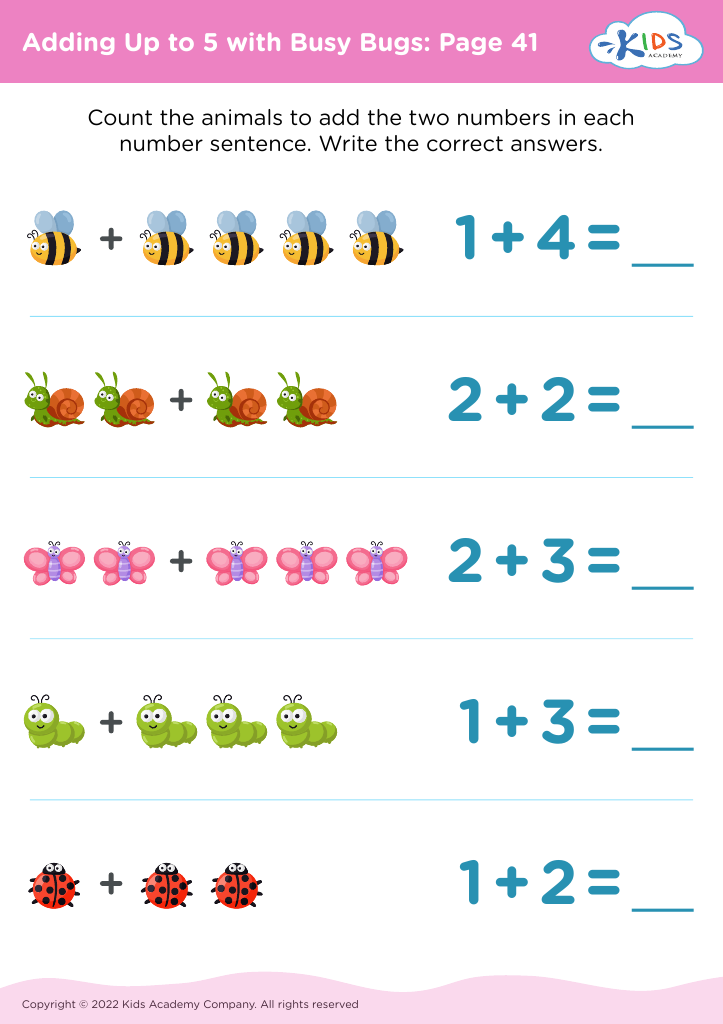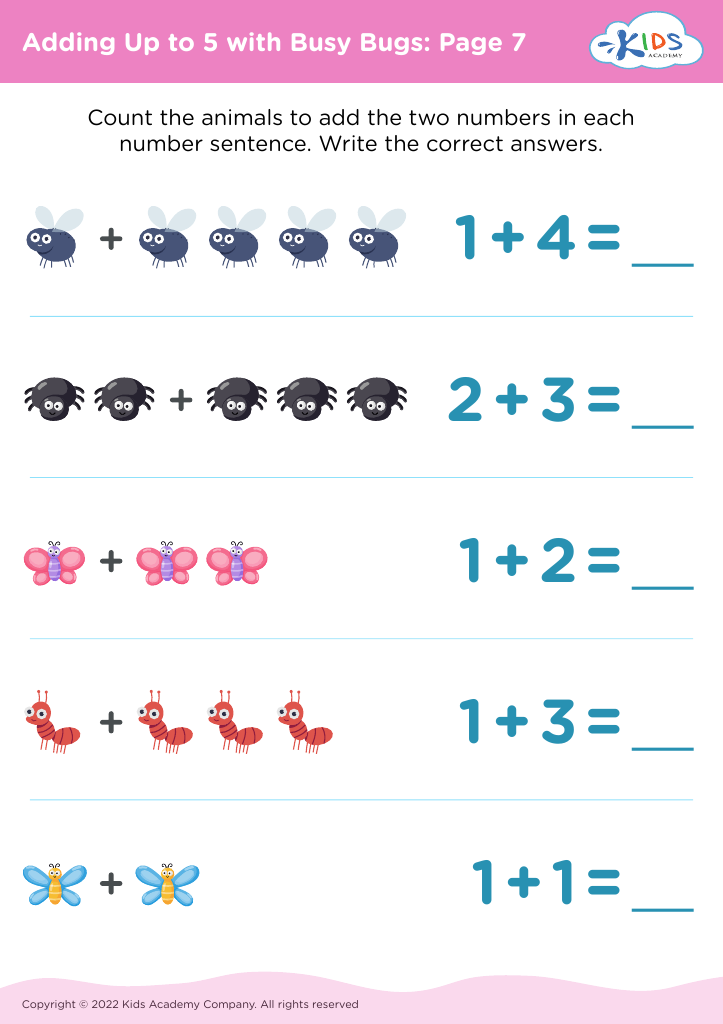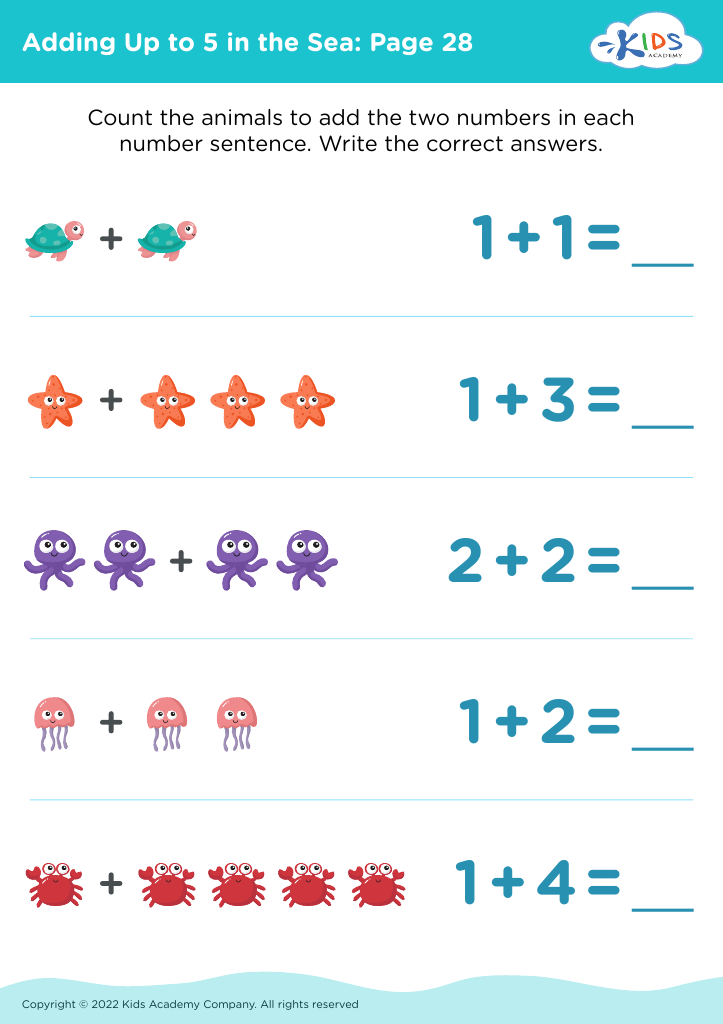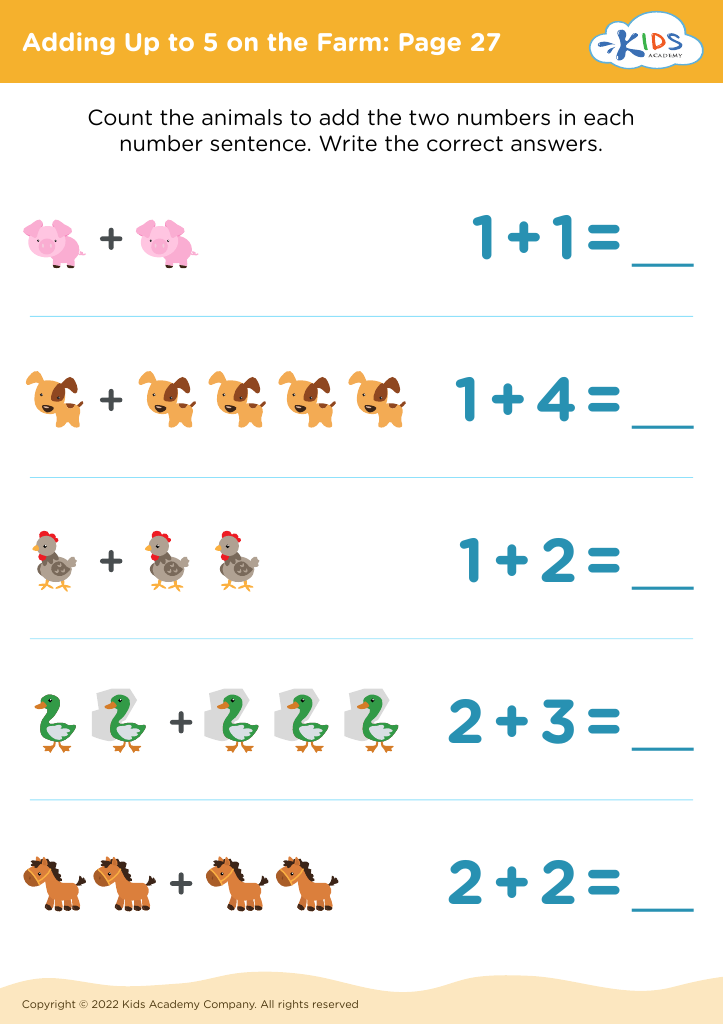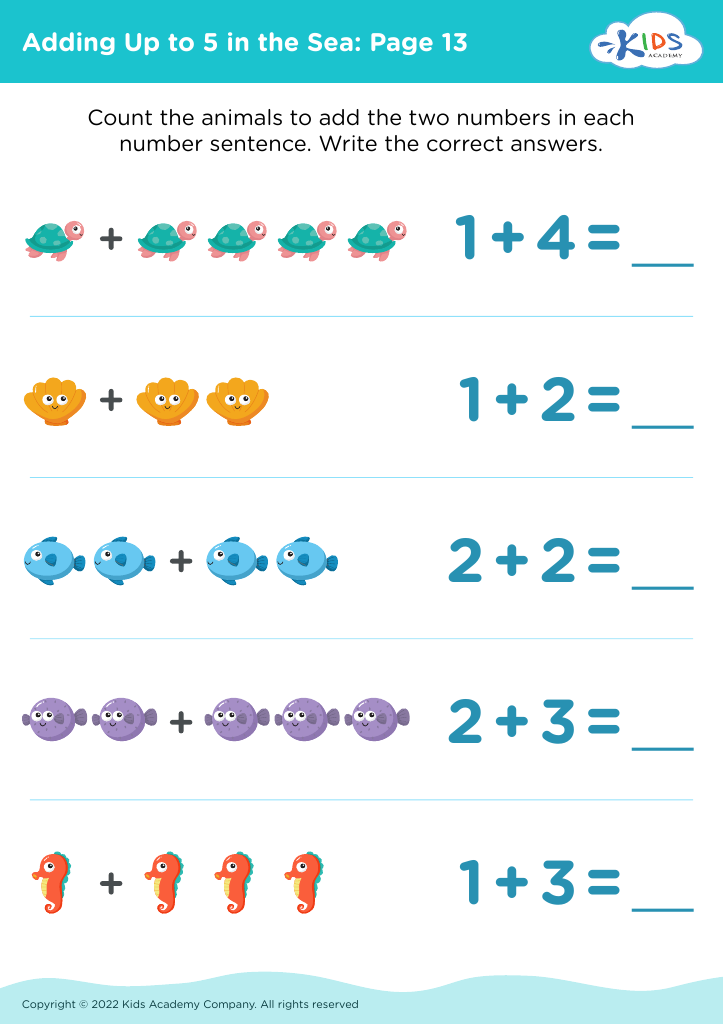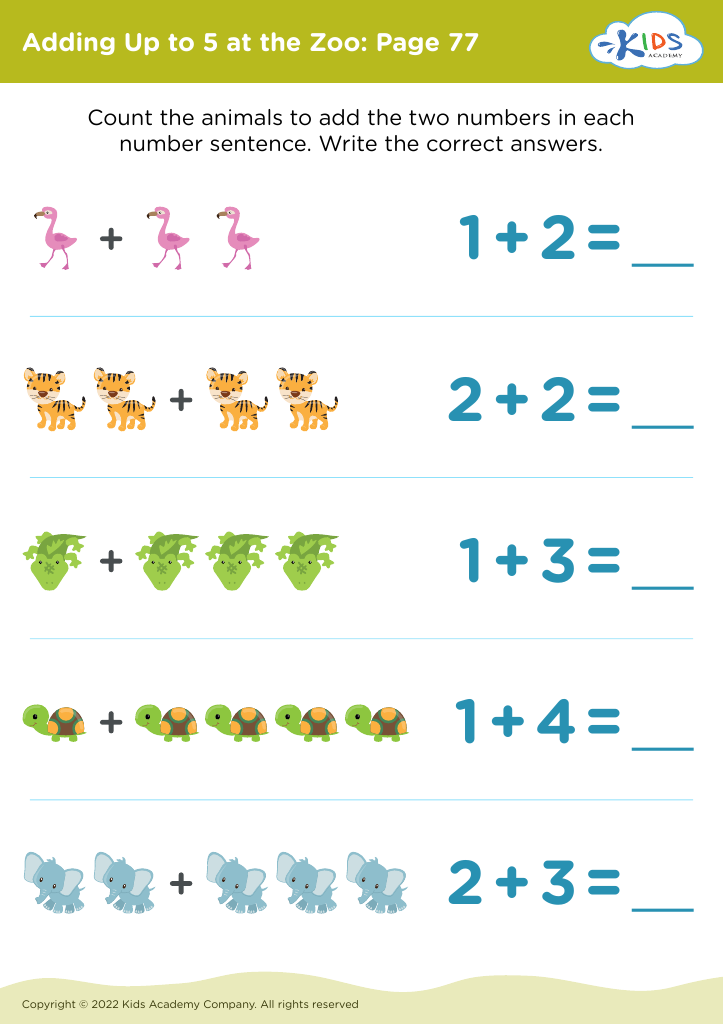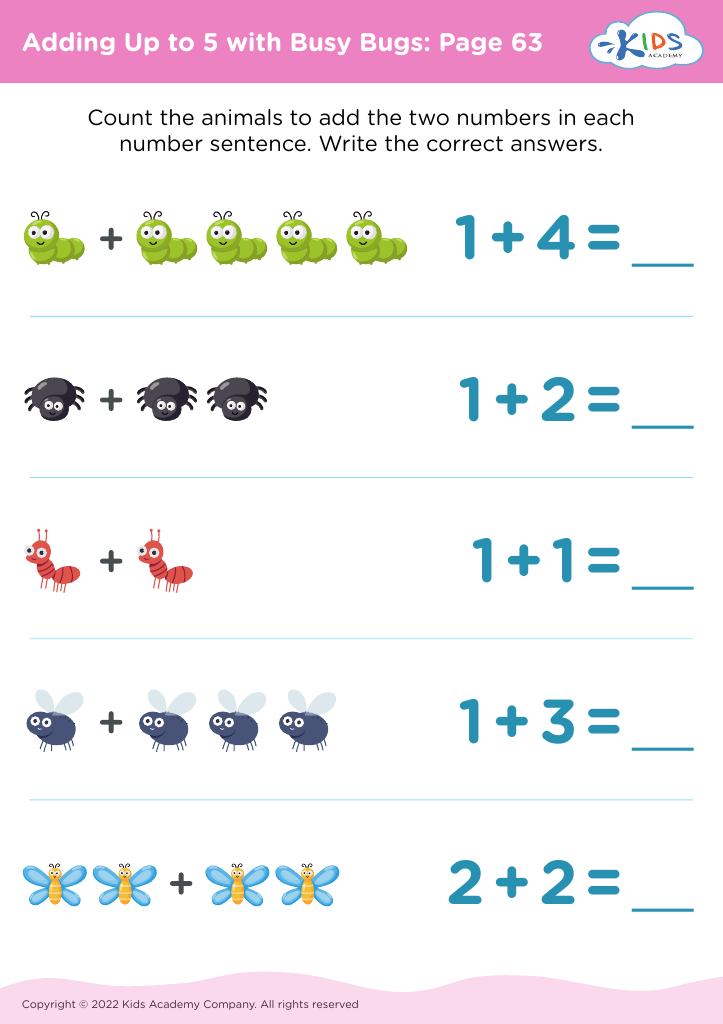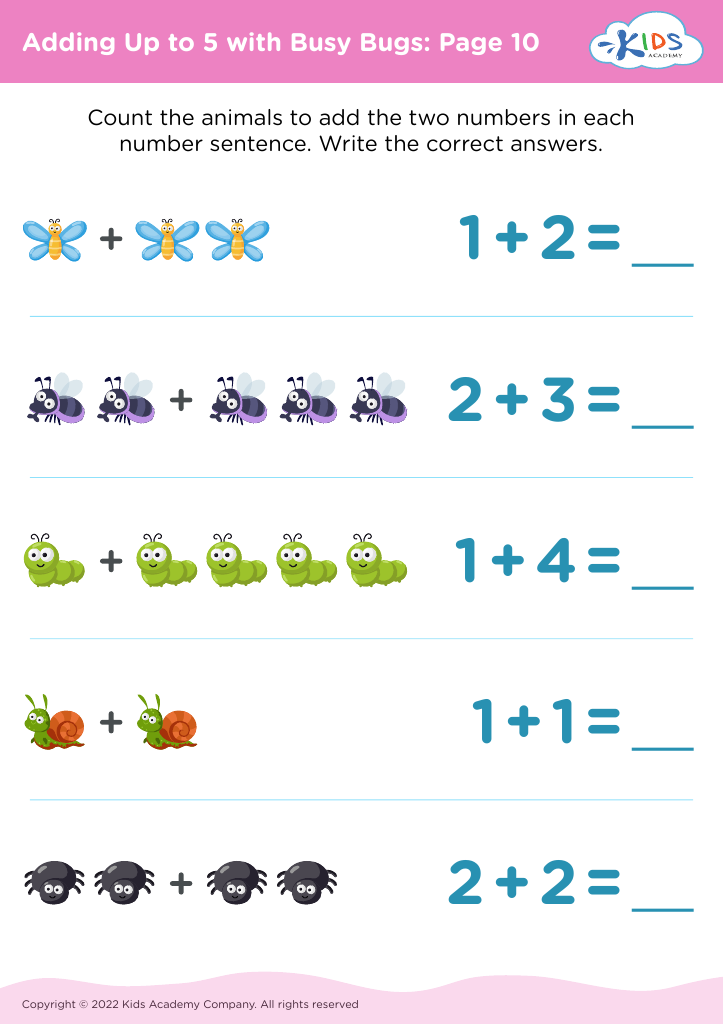Counting practice Worksheets for Ages 4-8
389 filtered results
-
From - To
Discover engaging counting practice worksheets designed for children ages 4 to 8! Our resources, perfect for early learners, feature a variety of activities that make mastering counting skills fun and interactive. Each worksheet is tailored to enhance number recognition and counting abilities through colorful illustrations and captivating themes. From counting objects to number tracing, children will build a strong mathematical foundation while developing fine motor skills. These printable worksheets are ideal for both classroom settings and at-home learning, providing parents and teachers with versatile tools to foster a love for numbers in young learners. Start your counting adventure today!
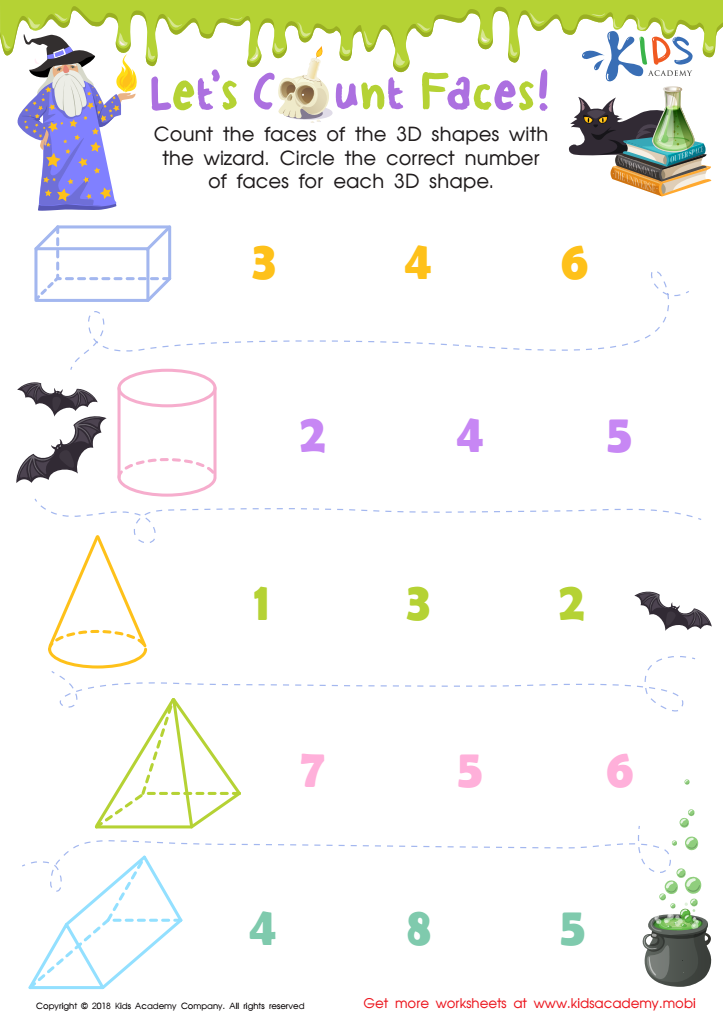

Let's Count Faces! Worksheet
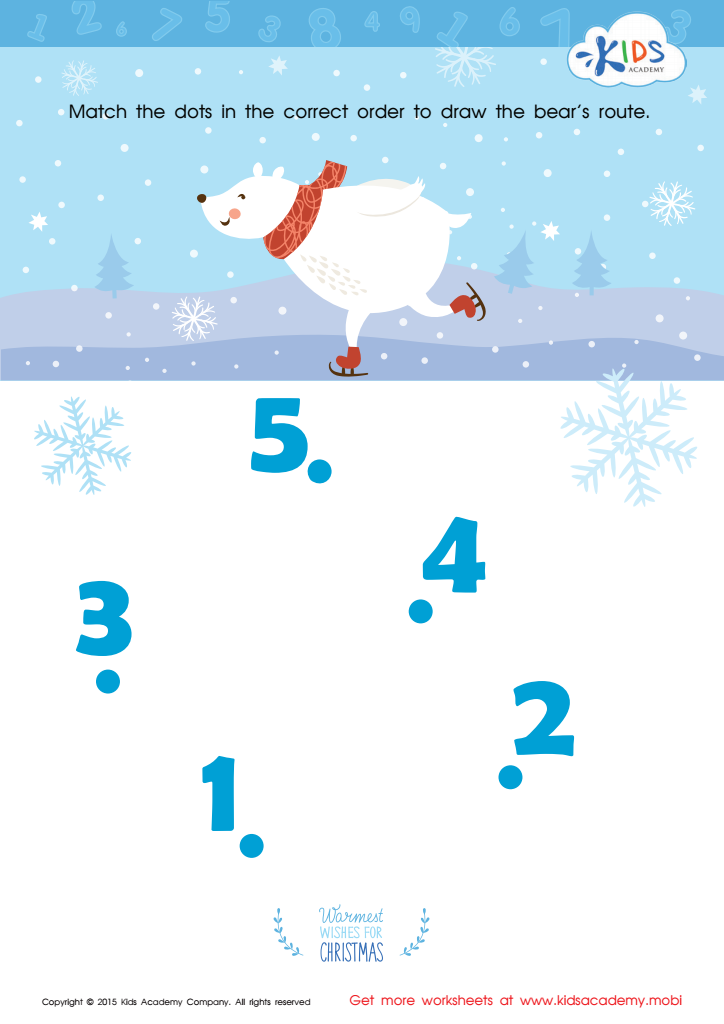

Drawing the Bear's Route by Number Worksheet
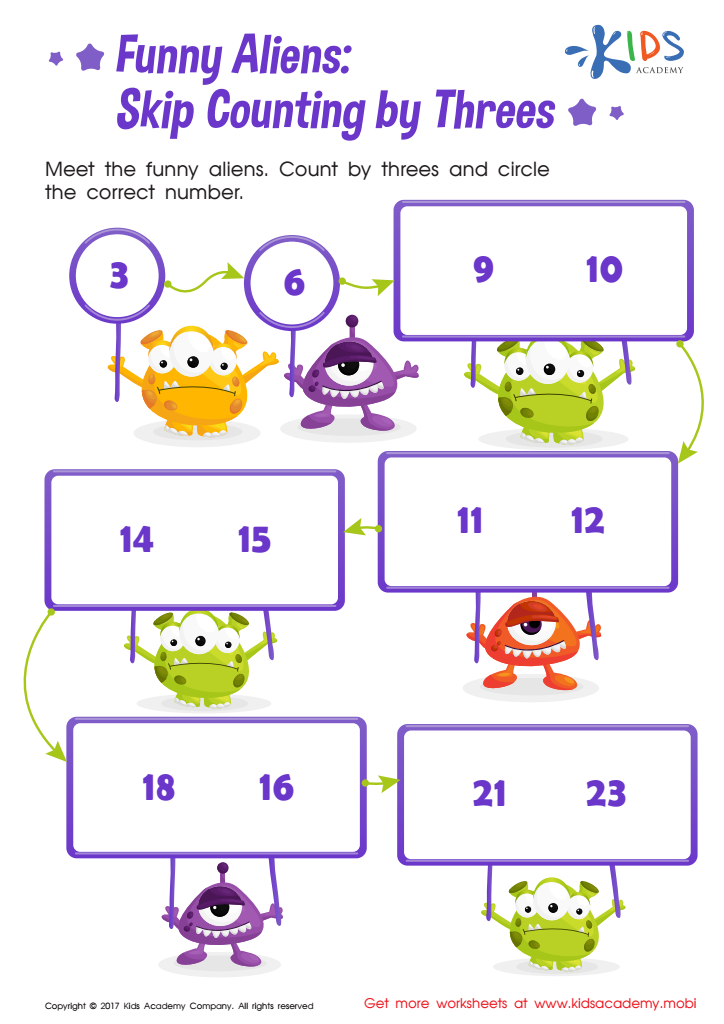

Skip Counting by 3s: Funny Aliens Printable
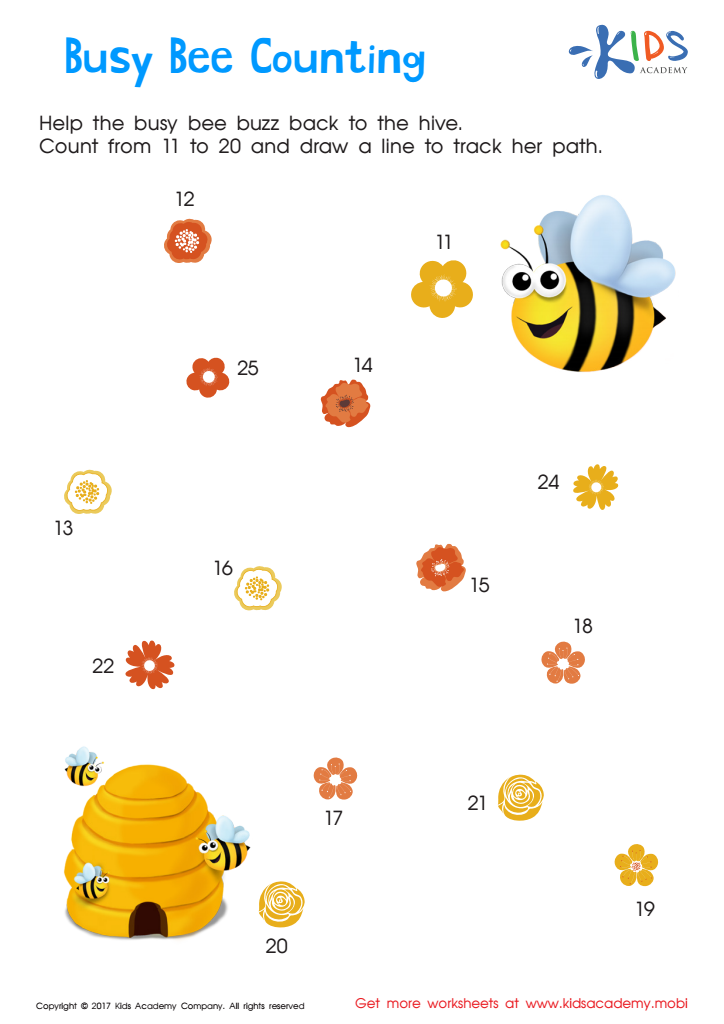

Ordering 11–20: Busy Bee Counting Worksheet


Base Ten Block Counting Worksheet
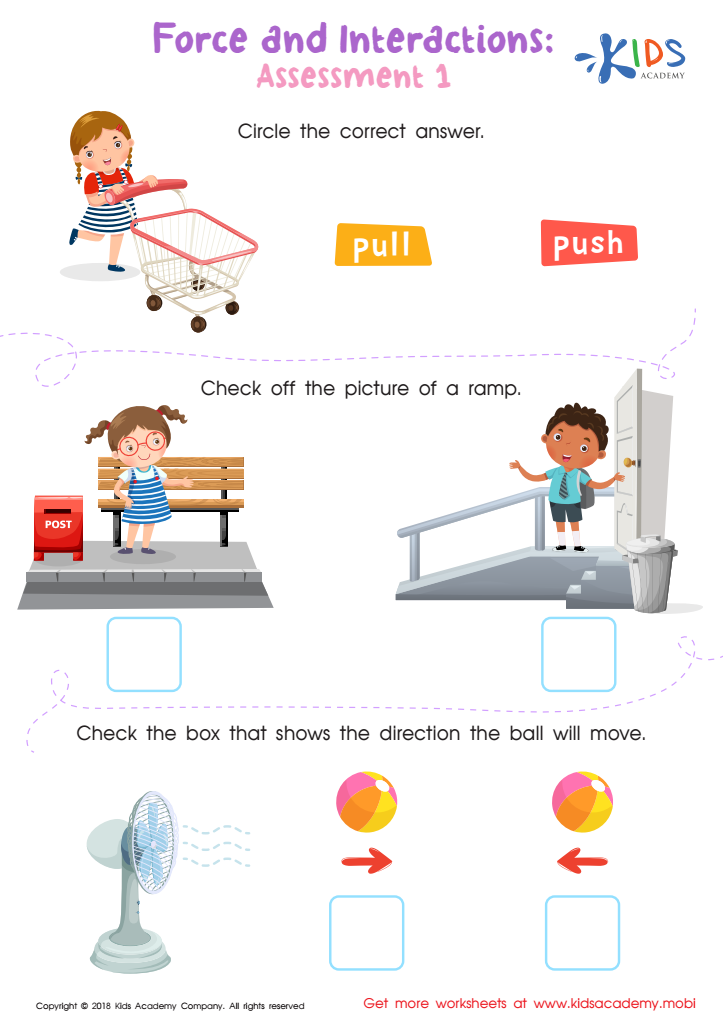

Force and Interactions: Assessment 1 Worksheet
Counting practice is essential for children ages 4-8, as it forms the foundation for their mathematical understanding and overall cognitive development. At this stage, children are naturally curious and eager to explore numbers. Engaging in counting activities helps them develop crucial skills such as number recognition, one-to-one correspondence, and the ability to group and categorize objects.
When parents and teachers prioritize counting practice, they foster a positive attitude towards math. Early exposure enhances confidence and helps students to view math not just as a subject but as an everyday skill. Furthermore, counting activities can be seamlessly integrated into daily routines, such as setting the table or counting toys, making learning organic and relevant.
Additionally, counting serves as a precursor to more complex math skills like addition and subtraction, helping children build a solid foundation for future learning. As children practice counting, they also develop problem-solving skills and logical reasoning, which are valuable across all areas of education.
In summary, by supporting counting practice, parents and teachers can empower young learners, cultivate a deep-seated love for learning, and set them on a path to academic success. This crucial early intervention nurtures both mathematical aptitude and overall personal growth.
 Assign to My Students
Assign to My Students
